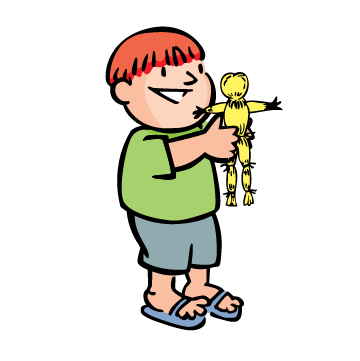Boston Children's Museum
308 Congress Street, Boston, MA 02210
617-426-6500
© Boston Children’s Museum 2024
Website Design by JackrabbitFor the Wampanoag Tribal Nation in Massachusetts, summer brings many things to be thankful for—including corn! Corn is special to the Wampanoag, and making corn husk dolls is just one way that parts of the corn plant are traditionally used. Try out this activity that Wampanoag children and adults have been doing for many years (and if you like, you can call them “action figures” instead of dolls). Click here to watch a video of traditional Wampanoag corn husk doll making.
Gather the materials. Soak the corn husks in warm water until they are saturated and flexible. Make sure that the bucket or bin you are using is large enough to fit the husks in. You will need to soak about 15 husks per student.

Ask your students if they have ever seen or owned dolls or “action figures” before. What are they usually made of? Did they ever try making their own dolls or action figures out of any different materials? Tell your students that people have been making dolls for thousands of years out of many different materials, and that today they will make dolls in a way that Native American children and adults have been making them for many years.
Make a doll out of dried corn husks.
After students have created their dolls, bring them together to talk about what they have done. Which step was the hardest? Does their doll remind them of anything? Is there anything they would change?
If they would like, students can choose to add legs to their dolls. Split the bottom half of the doll in 2 parts by tearing the husks from the bottom toward the waist. Tie the 2 halves with pieces of yarn or twine at the “knees” and the “ankles”. Once they are tied, the 2 halves will resemble legs (See Figure 7). As a next step, you could challenge students to create their own method for creating dolls out of corn husks. How many different kinds can they make?